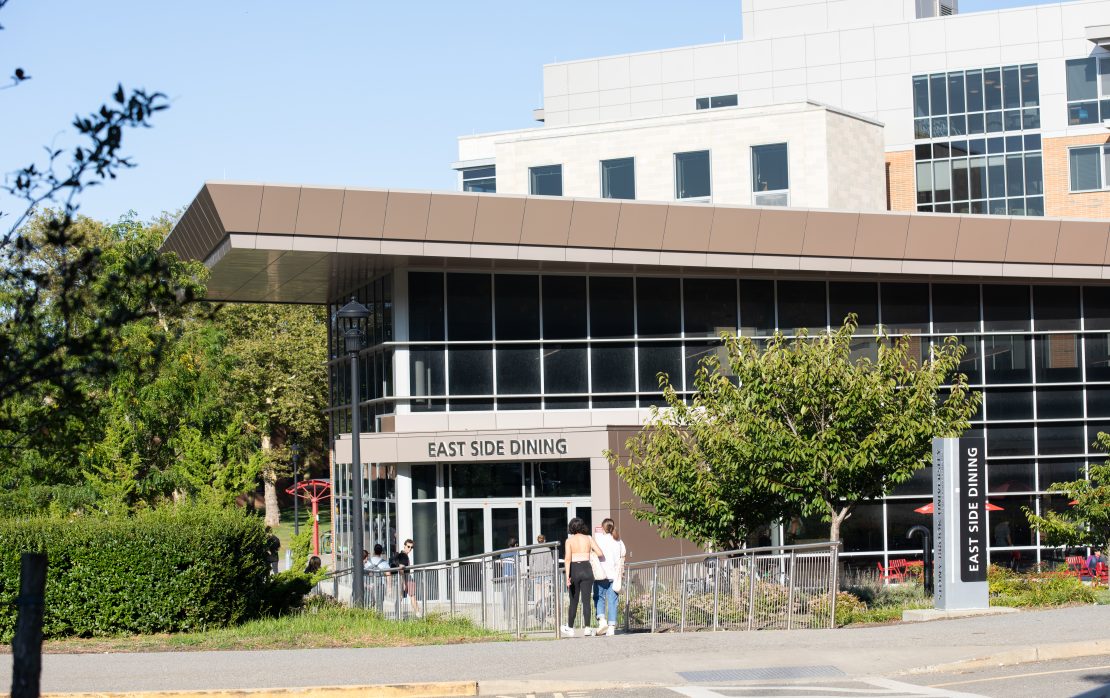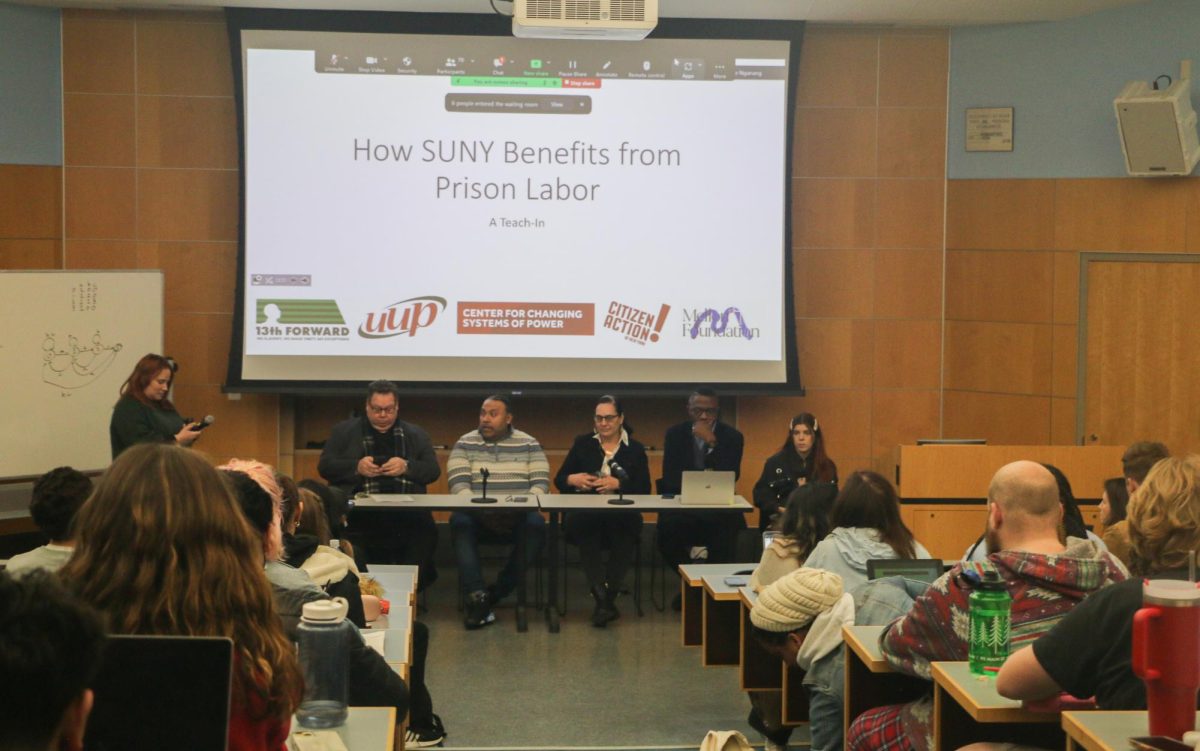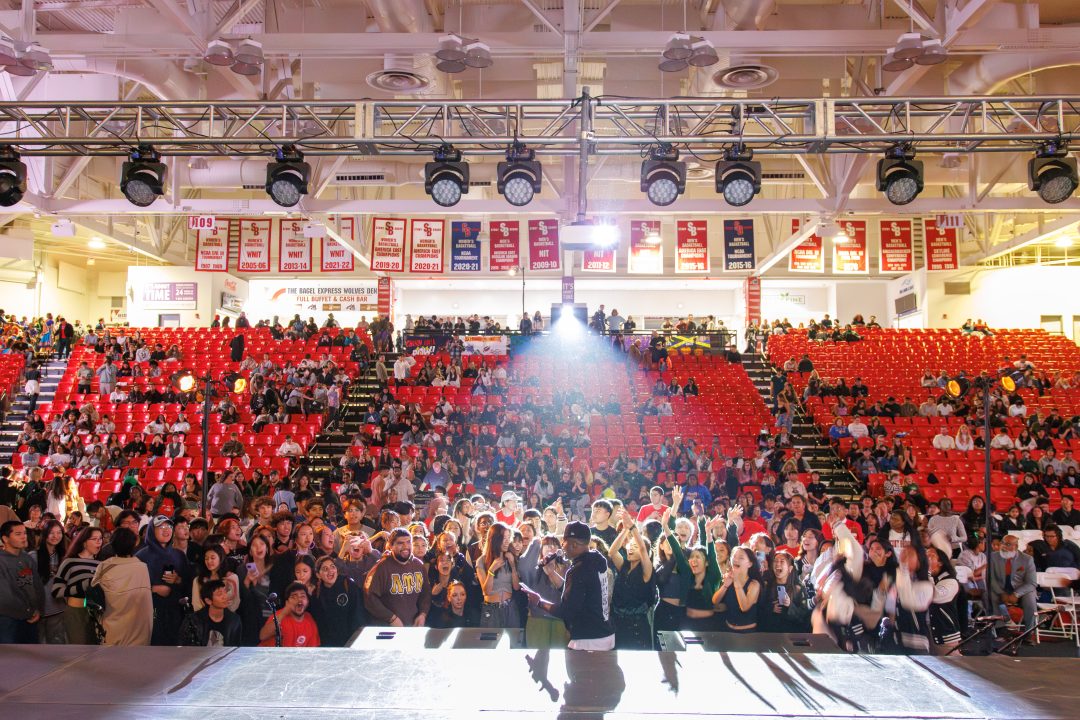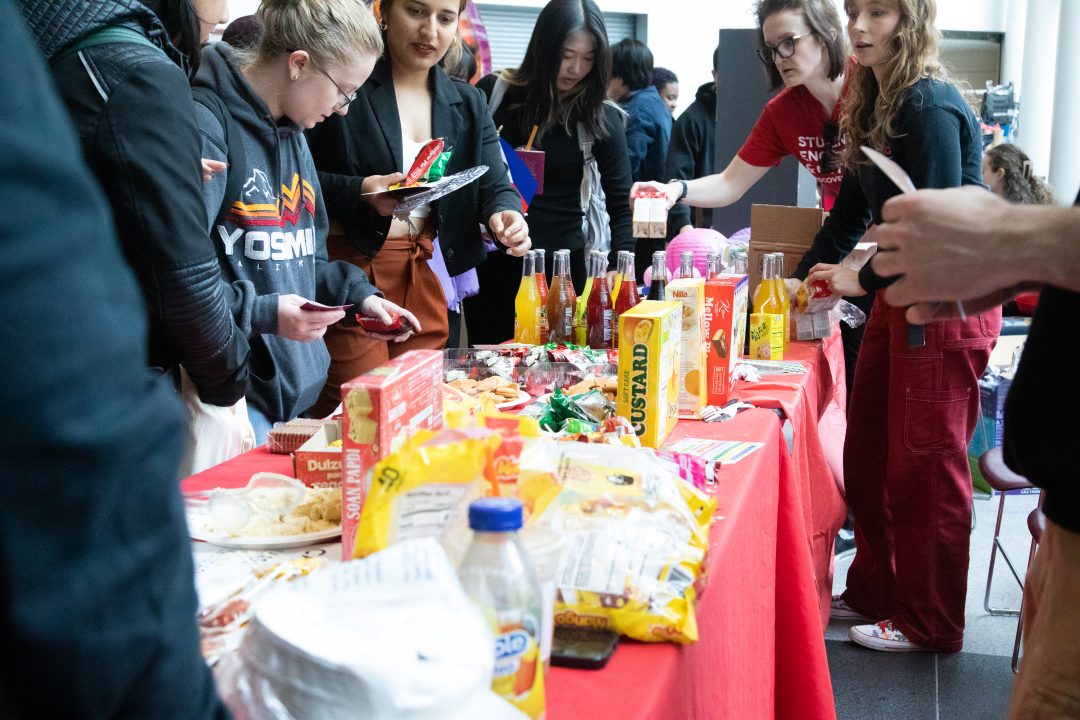
“Professor I have to go, my birds escaped from their cage,” a student wrote in a classroom Zoom chat.
The exchange, which allegedly occurred during a class at St. John’s University, was posted on a “Zoomiversity” Instagram account run by Stony Brook students.
The account is only one of many documenting student antics during online classes and demonstrates some of the unique circumstances that have come with moving most of the country’s universities online.
Since their first post on March 30 — a graphic saying “Professor? Can you hear me?” — the Stony Brook account owners have posted more than 30 photos and videos. They’ve gained more than 800 followers and expanded from only posting about Stony Brook to covering Zoom mishaps from universities across New York State.
One video shows a student who appears to be attending class from a swimming pool. Another post features a TA hitting on a student via private message on Zoom. Other posts feature frozen screens, students struggling to enter their Zoom classrooms and people forgetting to mute their mics.
Stony Brook University has encountered a host of challenges since it moved online more than two weeks ago. Digital classrooms have suffered glitches on third-party testing platforms, “Zoom-bombing” incidents caused by hijackers wreaking havoc on Zoom meetings and website outages caused by the university’s nearly 26,000 students trying to log on at the same time.
Blackboard, the university’s learning management system, crashed twice the first day classes went online. Charlie McMahon, interim senior vice president and enterprise chief information officer, estimates that around 23,000 or 24,000 students logged onto the system between March 23 and April 7 — nearly all students enrolled at the university.
“We have never had this much of a load on our Blackboard system,” he said.
The university added new Blackboard servers and increased the system’s memory capacity to accommodate the uptick in traffic.
Professors have also encountered issues with the third-party online testing platform Respondus, which students can log into through Blackboard.
In some larger classes, the sheer volume of students taking a test at the same time has resulted in slow service. Some students even found themselves kicked off the platform, and unable to complete their test or quiz.
“You can imagine the anxiety that creates, when you’re in an online test and the technology is not working as it should,” McMahon said. “Respondus is taking a couple of steps that they believe will remediate that problem, but they have not been forthcoming with us about what they thought the problem was, nor how they have fixed it.”
The university is working with faculty to troubleshoot technical issues during testing, and with the company to “make sure that it’s not a recurring problem,” according to McMahon.
Stony Brook University widely implemented Zoom to allow professors to maintain normal class schedules and virtually interact with their students. But in the first week of classes, this opened up many courses to “Zoom-bombing” incidents, which have plagued universities across the country.
McMahon said there were “several” incidents during the first week of online classes, especially on the first Monday back.
“We have tracked it down to a student who shared the information about the class with friends and while we didn’t record enough information to know who was behaving badly, we suspect that non-Stony Brook people who were given the ability to log into the class are the culprits,” he said.
All courses are now locked so that students have to sign into the Zoom meeting with their Stony Brook IDs. McMahon said that so far, this has worked.
“My apologies to the students and to the faculty who had to endure that — some of those exchanges were particularly vile,” he said. “No one should be put in a position where they have to deal with that sort of bad behavior.”
In one instance, a hijacker drew pornographic images and racial slurs during an online Africana Studies class. The Provost’s Office sent an email the next day condemning “offensive and inappropriate content” in online classes. According to the email, several complaints were made about “Zoom intruding” incidents.
McMahon said that many professors are recording and posting their lectures so that students who were unable to attend can still review the course material.
The recording function is disabled for students, but with the professor’s permission, they can request to record the lecture to their computer.
“If they did, it would not record any of the images from your fellow students that were in the class,” McMahon said. “To my knowledge, no students have asked to do local recording, nor have any faculty members granted permission, but it would be possible.”
International and out-of-state students who have returned to their homes in different time zones have faced added difficulties. Most courses are taking place at the same time they were originally scheduled, which means that a 5 p.m. class on Long Island would take place at 5 a.m. in China.
McMahon said that faculty members are “very aware of the students who are in different time zones,” and have taken care to “contact those students and work on ways that the students can participate in classes.”
Even still, students are struggling with the transition.
Austin Leong, a junior business management major, said that remote learning makes it more difficult for him to complete his assignments.
“I find it to be more relaxing since now students can be in their home clothes /eat/ use their phones more discreetly I guess,” he said in a direct message on Instagram. “But then it’s also really difficult to fully grasp course material.”
Leong said that he doesn’t like online learning better than physically going to class — he misses campus life.
“Being on campus was my escape from my parents,” he wrote. “Not that I hate them but it’s just nice to be independent and function on my own as a student.”
Freshman biochemistry major, Jessica Gibson, said she took lessons online her senior year of high school so the transition has been easier for her than most people.
“It seems like most professors understand the new technology, but that certain departments are still unorganized because of all the changes,” she wrote in an email. “I had a problem with my Zoom account the other day where I couldn’t log back in and missed my chemistry class, but the professor understood and didn’t count it against me.”
Gibson said that her classes aren’t more difficult than before, but she thinks there’s some more work “due to not sitting in class anymore.”
“A couple of my professors have everything on Blackboard and that’s mostly the class for the rest of the semester,” she said. “My CHE131 class had our 2nd midterm canceled because of schedule changes and all the chaos.”






















